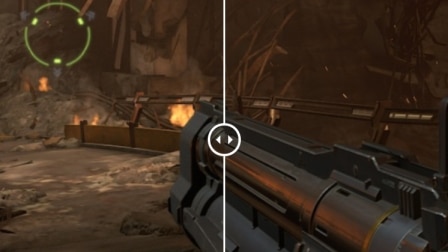DooM Eternal based on the graphics engine id Tech 7, an evolution of the technology that moved its predecessor, DooM (2016), also used in Quake Champions. These engines are created on the basis of a very simple assumption: reach the highest possible frame rate. Of course, games based on such a technology will not offer the graphic detail of a Battlefield V, but DooM Eternal, among other things, can theoretically reach even a thousand frames per second.
We tested it with 13 video cards, to probe the performance differences between GeForce is Radeon first of all. Another peculiarity of this engine is the fact that it is based on APIs Vulkan, and this too is a decision that stems from the desire to maximize the frame rate. Here we find a difference compared to DooM (2016): while the previous shooter id Software offered two options regarding the API, namely OpenGL 4.5 o Vulkan (the latter introduced after launch), we have no choice here: DooM Eternal is played on Vulkan.
Vulkan low-level APIs have taken up the OpenGL baton. At the base of the standard we find the compilation technology SPIR-V, together with the new version of the standard OpenCL 2.1 for parallel programming and the ability to exploit the GPU for heterogeneous purposes. Khronos Group carries on its project which foresees the merger of Vulkan and OpenCL under a single library, which would allow to manage the graphic part and the computational part together, greatly reducing the complexity.


Actually we would have expected greater depth in customizing the graphics and within the various presets made available. Even this factor, however, seems to have been sacrificed in favor of the frame rate. We have benchmarked the various graphic presets made available, and there are very few differences both in terms of changes to graphics and performance.
The engines of the id Tech series, as known, have their roots in old technology Megatexture created by John Carmack (now no longer works in id Software) for the first Rage. MegaTexture was based on a single huge texture for the ground, which was scaled in quality and visual detail according to the needs of the engine. If he suffered from scarce computing resources available, the texture was rendered at a lower resolution; if, on the other hand, computing resources abounded, it was seen in its maximum level of detail.
DooM Eternal also works the same way: depending on the number of enemies on the screen and the presence of physics, the overall resolution of the image and the resolution of the textures are adapted accordingly. Changing the quality of the texture among the graphic options gives an indication of the consumption of VRAM, and there are also very important changes on this parameter. In reality, then there are no such marked differences in visual detail at stake.
Precisely because more than the free choice of the player favors the logic of the graphics engine that tries to push the frame rate as high as possible. Another thing must be said about VRAM: on the basis of our tests we have noticed that it is not possible to set a combination of presets, resolution and frame rate such that the amount of VRAM available on the video card is exceeded. The engine needs to deposit in it the large texture that represents the game world and simply the conditions can be created for which the game does not start.


for this reason that in the graphics you do not see the performance result with certain video cards in correspondence with certain graphic settings. If you have 4 GB of VRAM on the video card, in other words, and configure things to consume 5, the graphics options menu tells you that you are doing something unsupported and will not even launch the game. The voice that is going to impact most on VRAM consumption, predictably, that relating to textures: this parameter that you must therefore change if you are in crisis in terms of performance, always noting that there is no marked difference visually even between the Low and Ultra-Nightmare setting.


Note how there is a difference also in terms of polygonal presence, as well as the quality of the textures. In Ultra-Nightmare we see larger and more detailed stones, as well as higher resolution textures.
In DooM Eternal there is no integrated benchmark, so we ran the tests with an external tool and repeated a short game session of about one minute in one of the first levels of the experience. However, it is possible to enable an internal tool that tracks the rendered frames per second, the frame time, or the time it takes for the graphics engine to render a single frame, the occupied VRAM, the APIs used and more.
In DooM Eternal there are 6 graphic presets, that is Low, Medium, High, Nightmare, Ultra and Ultra-Nightmare, whose name obviously goes to mention the famous "Nightmare" difficulty level of classic DooM.
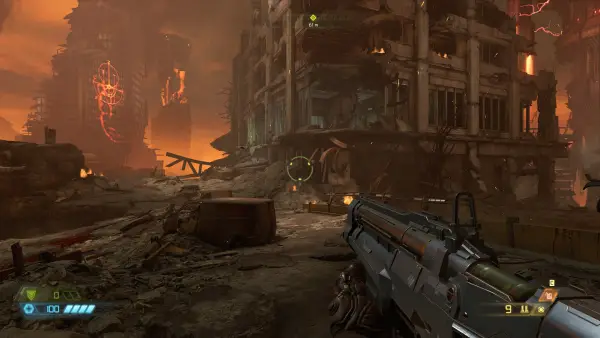
Bass
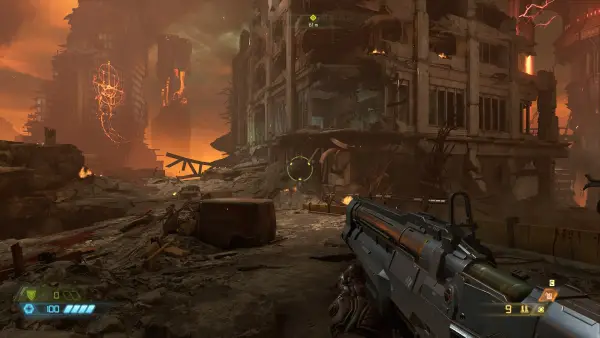
Middle
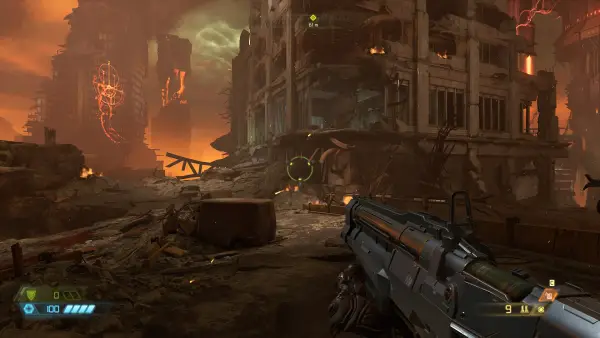
Tall
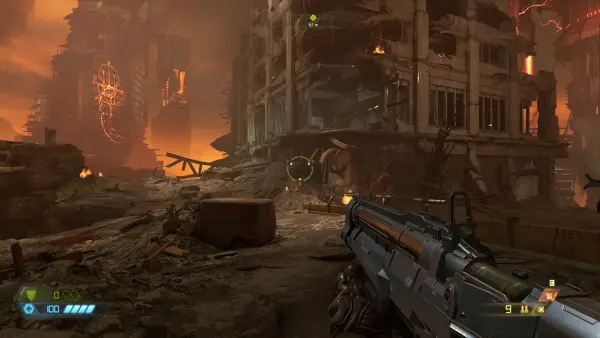
Nightmare
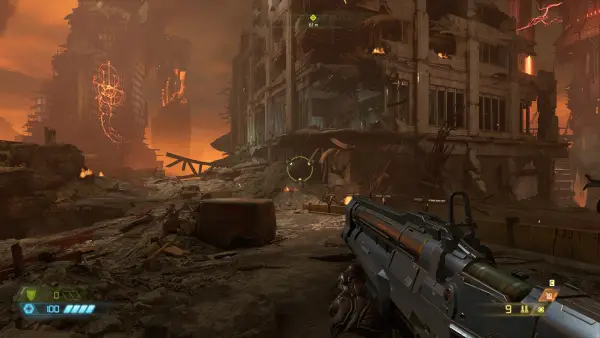
Ultra
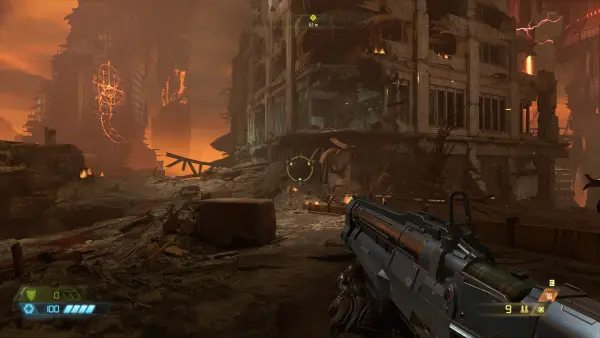
Ultra-Nightmare
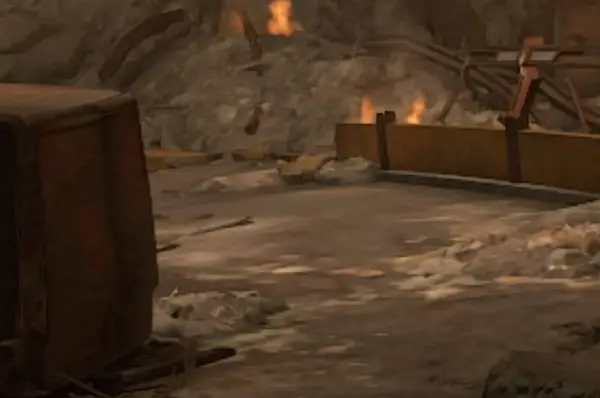
Bass
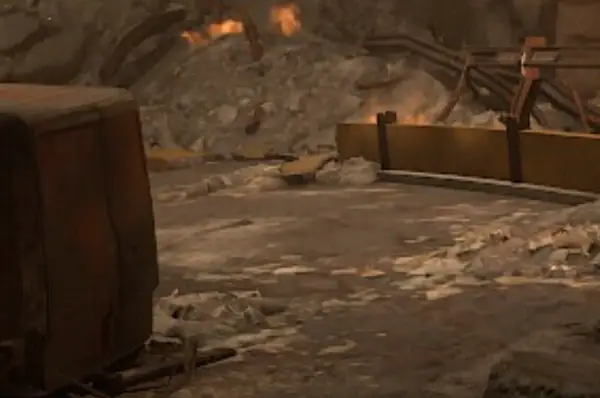
Middle
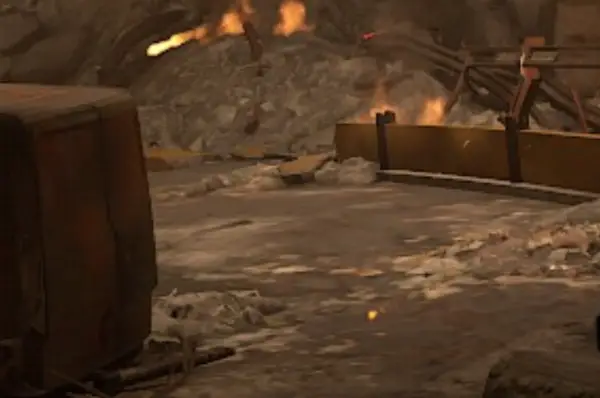
Tall
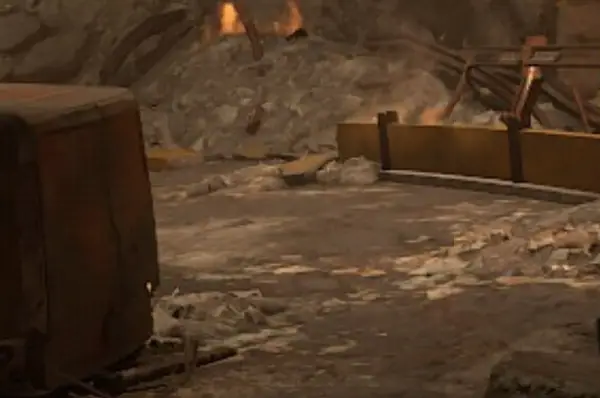
Nightmare
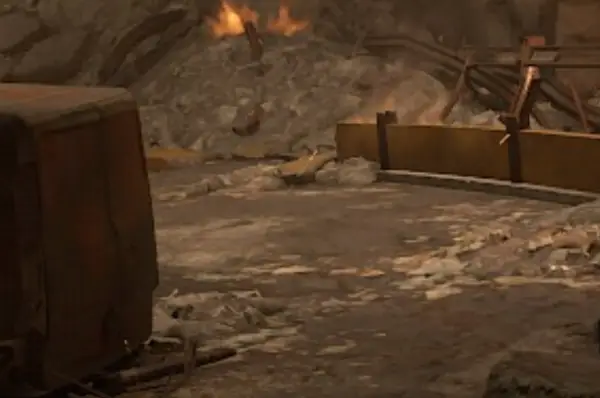
Ultra
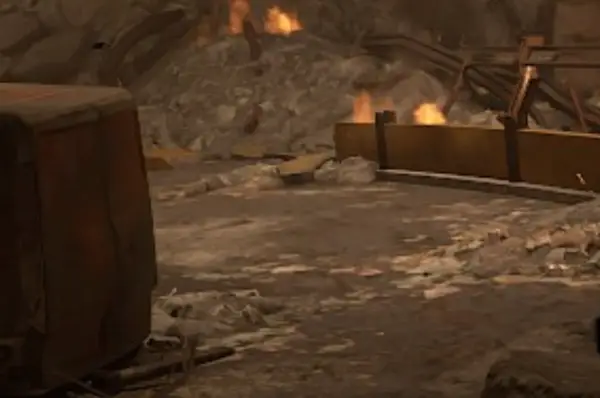
Ultra-Nightmare
Here's what the performance differences are based on our benchmark suite.
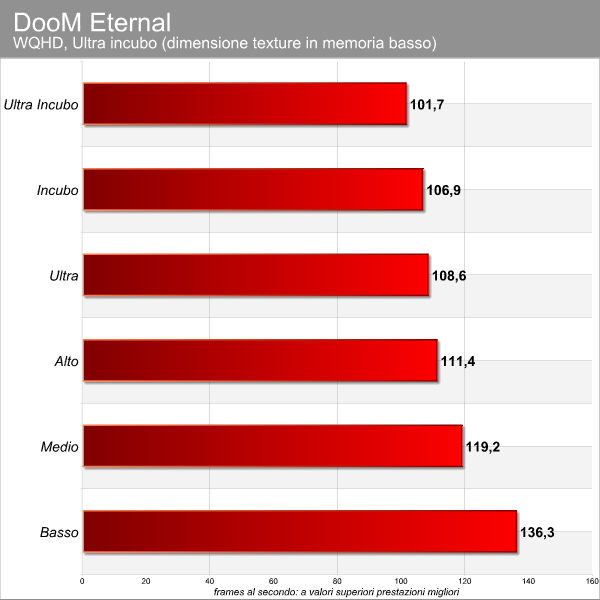
This is what the menu of the graphic options looks like, with at the top the indication on the amount of VRAM occupied.
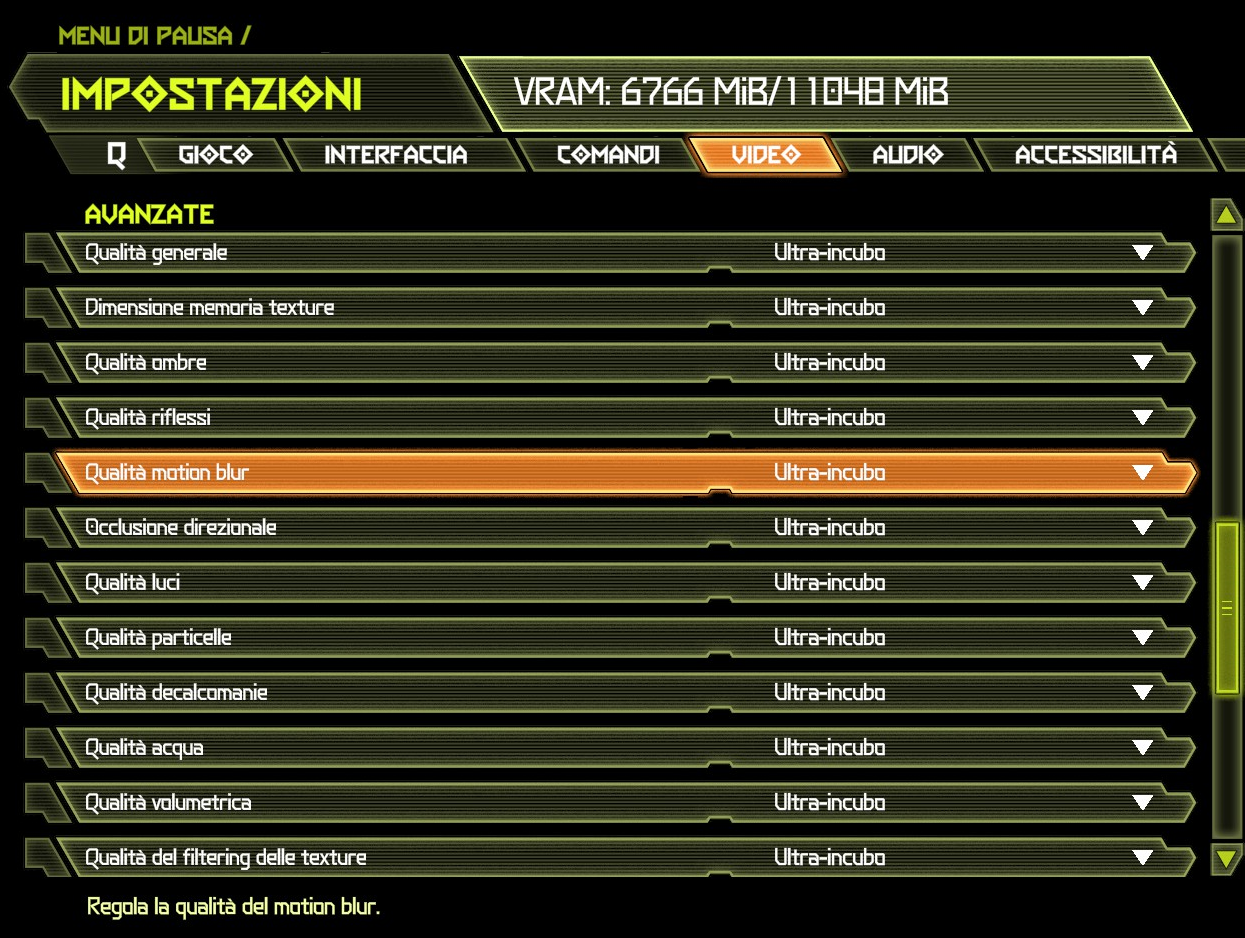
Another consideration that must be made concerns the problem high frame rate tearing. A graphics engine so optimized on performance, with vertical synchrony disabled, produces a lot of tearing. With the production of multiple frames for each refresh of the monitor, the frames are displayed simultaneously with the consequent annoying effect of misalignment of the images. For these reasons, even more than other games, DooM Eternal adapts particularly well to monitors G-Sync or FreeSync: above all the solutions from 240 and 144 Hz, in the conditions in which the hardware allows it, that is, it renders at least 240 or 144 frames per second, they represent the only possibility of preserving the graphics engine's ability to render so many frames per second.
We tried Doom Eternal on the test platform that we usually use for the benchmarks of the new video cards, composed of these components: MSI Z370 Tomahawk, Intel Core i9-9900K processor, 16 GB of DDR4-3600 memory and a 250 GB Samsung 860 EVO SSD. We tested with the drivers provided by AMD and Nvidia to the press in the pre-launch, Nvidia Game Ready 442.61 and AMD Adrenalin 20.3.1 Beta.
Don't miss the review by DooM Eternal with gameplay considerations and more
This is undoubtedly a high-end platform, which allows video cards to express themselves at their best. With less powerful platforms you will obviously see different results, but our aim is to understand what GPUs can offer in DooM Eternal, so a single platform for all GPUs was essential. We are certainly not advising to pair an RX 570 4GB with a Core i9-9900K, let's be clear!
Initially we wanted to try all the video cards at Ultra Nightmare, but we ran into the stakes imposed by the developer. Only a few cards allowed us to test Ultra Nightmare, while selecting this setting with a medium and low-end GPU, the game did not make it set.
Doom Eternal estimates the use of graphics memory used according to each graphic preset and often Ultra-Nightmare exceeds the total VRAM of the video card, so a popup says to lower the settings. Various graphic parameters obviously increase the occupation of the graphic memory, but the main culprit is called "size of the textures in memory", which is a parameter that we can relate to the heart of the id Tech 7 engine and how MegaTexture technology works.
We did some tests bringing that parameter to Low and Ultra-Nightmare, without registering performance or quality variations. Consequently, for our tests we set it to Low, leaving all the other settings of voices on Ultra Nightmare as per preset. In this way the memory occupation decreased significantly, allowing us to carry out the tests on all the video cards with an identical detail setting, otherwise we would have had to divide the cards into different groups.
What we noticed during our test session that a video card with a good amount of memory is a panacea for Doom Eternal. If you want to activate all the details to the maximum it is necessary to have a video card with at least 6 GB of memory, as you can see from the results of the GTX 1660 SUPER. The tested solutions with 4 GB of memory allow you to play smoothly in Full HD to 60 fps, but having more memory of great help in this game. There GTX 1650 4GB did not allow us to test in 4K, despite the parameter set to low.
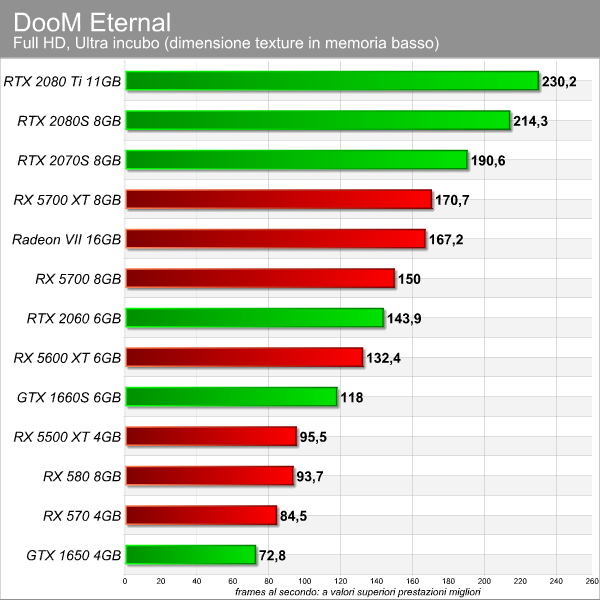
The other tests show us that Doom Eternal is well optimized and really all the tested solutions have performed very well. Cards like the RTX 2080 SUPER or the RTX 2080 Ti allow you to play smoothly even in 4K to the maximum detail. Also there Radeon RX 5700 XT, albeit with a lower frame rate, it allows you to enjoy the game in 4K if supported by a good system.
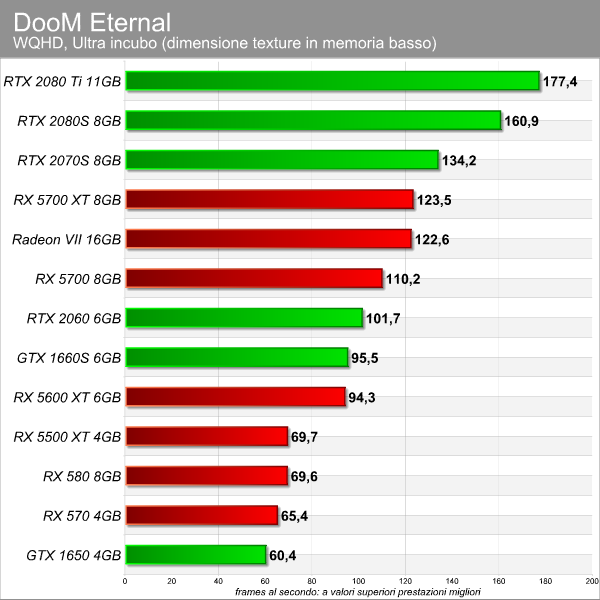
The proposals RX 570 is RX 580, now with a few years on their shoulders, they manage the game in Full HD very well, despite the maximum details. Many will therefore not need to switch video cards to enjoy Doom Eternal well. As for the differences between the presets, the option that could go for a greater number of configurations is the "Medium" detail.
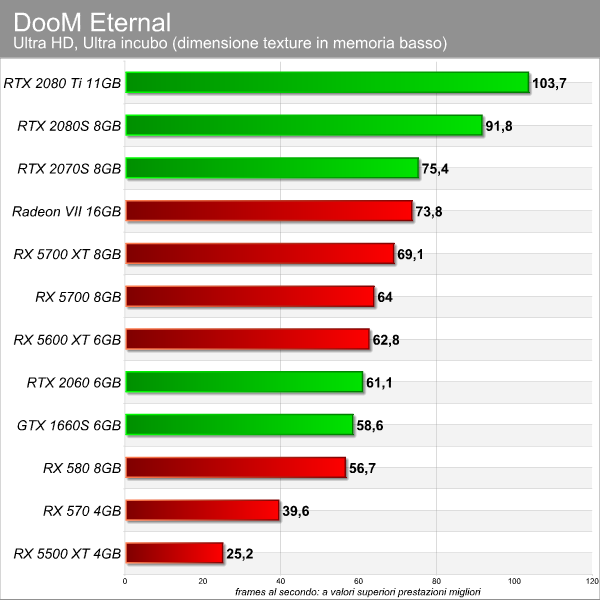
Our tests tell us that the graphics of good quality, the performance will certainly be good, while there is a more marked drop in performance by setting the preset "Tall". The further drop in performance of the subsequent settings is not supported by obvious quality improvements, so you have ample room to maneuver to enjoy the game.
Conclusions
In short, DooM Eternal runs very well on a wide range of video cards. Those who have a high-end system with RTX 2080 Super or RTX 2080 Ti can play at high refresh rates even in 4K, and even solutions such as the RX 5700 XT and the RTX 2070 Super can guarantee an adequate frame rate in 4K at Ultra Nightmare. GPUs like the RX 5600 XT allow you to play in 1440p in high detail and the lower end solutions allow you to play in Full HD in high detail.
Not a big problem as mentioned, because graphically speaking the different detail settings from Low to Ultra Nightmare do not change the experience so much, if you also keep in mind the fact that it is a very fast game, so there is not much time to dwell on the graphics during gameplay.





